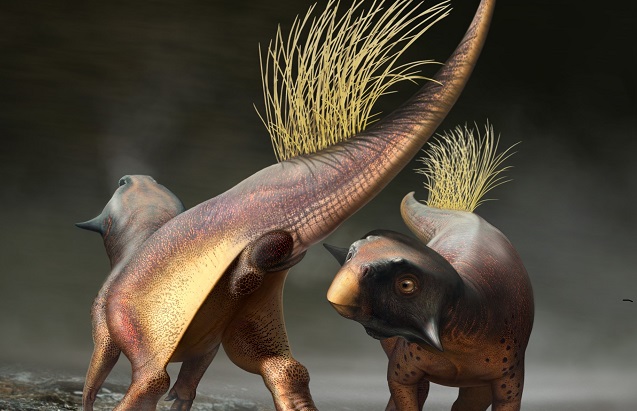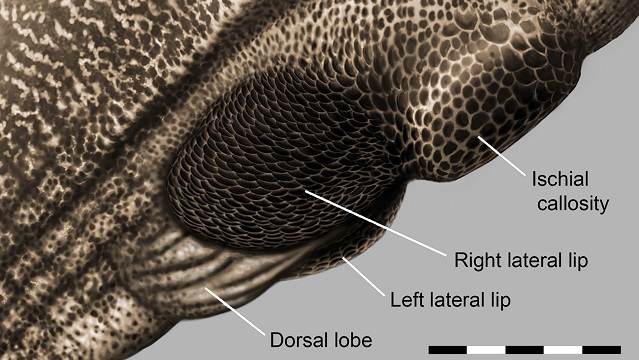British Scientists First To Ever To Reconstruct a Dinosaur Derriere

A reconstruction of Psittacosaurus illustrating how the cloacal vent may have been used for signalling during courtship
Bob Nicholls/Paleocreations.com 2020
Paleontologists from the University of Bristol are the first to ever to describe in detail dinosaur’s cloacal or vent. Like with birds, the dinosaur’s posterior has the single orifice for used for defecation, urination and breeding.
Specifically, the cloacol of a Psittacosaurus was reconstructed by Dr Jakob Vinther from the University of Bristol’s School of Earth Sciences, along with colleagues Robert Nicholls, a palaeoartist, and Dr Diane Kelly, an expert on vertebrate penises and copulatory systems from the University of Massachusetts Amherst.
We keep getting more and more information about what the dinosaurs actually looked like. Once upon a time natural history museums were known for their colossal reconstructions of Tyrannosaurus Rex skeletons. These depicted an animal which almost stood erect. This is why the movie monster Godzilla has always been depicted in this way.
And dinosaurs were always drawn as green all over and having a skin like reptiles do. But now we know that they were actually quite colorful and even had feathers.
The University of Bristol has been making headlines lately in the filed of paleontology. Just last December its scientists were able to map the brain of a Thecodontosaurus. Nick named The Bristol Dinosaur, the Thecodontosaurus’ brain was successfully reconstructed using advanced imaging and 3-D modelling techniques.
The cloaca is described by the scientists as being unique in its appearance. But it posses similar features to contemporary reptiles like alligators and crocodiles, which are the closest living relatives to dinosaurs and other birds.
The researchers note that the outer margins of the cloaca are highly pigmented with melanin. They argue that this pigmentation provided the vent with a function in display and signaling, similar to living baboons and some breeding salamanders.

Close up of the preserved cloacal vent in Psittacosaurus and the authors’ reconstruction of it (image credit: Study Authors)
The authors also speculate that the large, pigmented lobes on either side of the opening could have harbored musky scent glands, as seen in living crocodylians.
Dr Vinther said: “I noticed the cloaca several years ago after we had reconstructed the colour patterns of this dinosaur using a remarkable fossil on display at the Senckenberg Museum in Germany which clearly preserves its skin and color patterns.
“It took a long while before we got around to finish it off because no one has ever cared about comparing the exterior of cloacal openings of living animals, so it was largely uncharted territory.”
So it seems that thanks to the University of Bristol we may soon have a complete and acurate image of what the different dinosaurs really did look like. This should make future installments in the Jurrasic Park series quite interesting.
Read more about: DINOSAURS, University of Bristol



